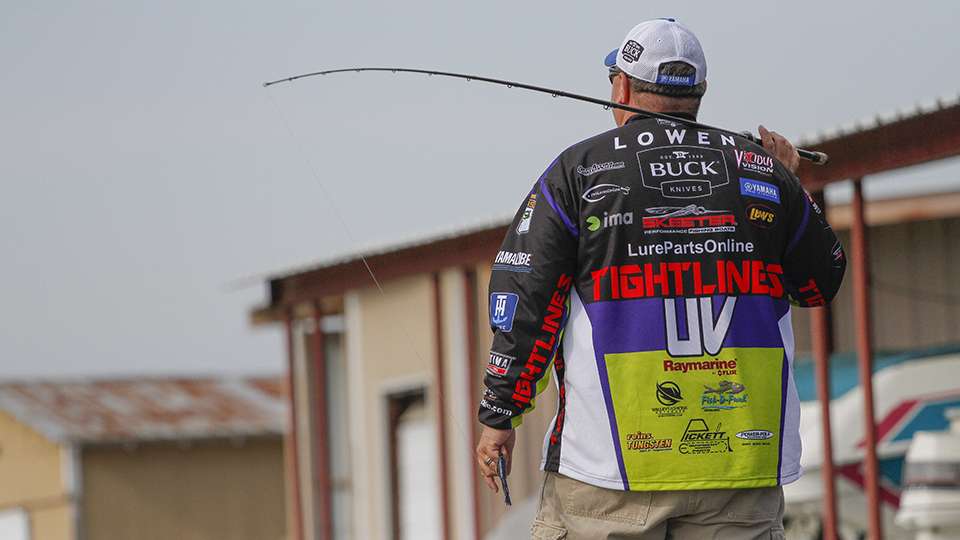
TULSA, Okla. – High pressure, low pressure. Windy days followed by calm nights. Chilly mornings with warm afternoons. That sums up three days of March weather during the GEICO Bassmaster Classic presented by GoPro.
Studying the 10-day forecast merely helped the 55 Classic anglers plan what clothes to pack for the trip. Dealing with water conditions influenced by the weather was the more compelling challenge during the competition.
A takeaway from the Classic is how the pros can help us all catch more bass during springtime. Sometimes the weather forecast can make planning ahead difficult, as the pros learned.
Here are short lessons on how some pros adjusted their strategies on a Grand Lake recovering from historic flooding and impacted by unsettled weather conditions.
Edwin Evers: Confidence area
Evers won the Classic by choosing a proven area where he won the tournament.
Waiting was the hardest part. Conditions for the spot weren’t great until the final day, though. He was confident the area had potential based on prior experience. On Day 3 that is why he ran far up the Elk River after previously fishing in the main lake.
“I planned on fishing there but until the final day the wind wasn’t good for it,” he said.
Evers sacked the week’s biggest catch weighing 29 pounds, 3 ounces from the faraway spot up the river. He caught the fish in about two hours, mostly on a finesse jig fished around laydowns washed up on a shallow flat.
“The biggest lesson for the average angler is to fish areas where you have the most confidence,” he added. “Take your list of confidence areas and match those up with the existing conditions that will likely produce.”
Evers waited for the wind to be right for his area, and the spot moved to the top of his list of confidence areas.
Jason Christie: Confidence lure
Classic runner-up Christie committed to one lure for simplicity and focus.
He eliminated any need to continue changing lures and presentations using a wide selection of baits. Doing so allowed him to stay intensely focused on any subtle changes needed for improvement while using the same lure.
“All I did was change the depth and retrieve,” he said. “I didn’t need to try different lures and presentations because of my confidence in the lure.”
That makes sense when you consider the time involved in rummaging through a tacklebox when other lures fail to produce.
Christie chose a simple 1-ounce spinnerbait with a single No. 6 Colorado blade. The spinnerbait, and that setup, is a proven prespawn lure during early spring.
“The best advice for fishing under the conditions we had is when all else fails to use a lure that is known to catch bass during the season,” he suggested. “Keep it simple.”
Bill Lowen: Rely on experience
The conditions on Grand Lake set up in favor of Bill Lowen, a skilled shallow water angler and the fourth-place finisher. Cold, stained water in his chosen area lined up with his plan to use a crankbait.
Lowen made the best of his decision to stay focused on shoreline cover. There was only one other option. That was to back off and randomly search for bass between the shoreline and pre-spawn staging areas near deep water.
“That can be time consuming and we didn’t have a lot of that in our favor,” he said of the three-day elimination format. “I played my strengths and made the most of it.”
Lowen’s research showed signs of cold water during the tournament. Instead the water gradually warmed. The plan to fish exclusively with the crankbait gave way to pitching a jig along docks.
“Bass on Grand Lake will move shallow on just a slight warm up,” he said. “I wanted colder water for consistency but having a fall back plan helped.”
The takeaway is having a textbook, proven option available when committing to your angling strengths. For Lowen the jig allowed him to slow his presentation while remaining in shallow water where his confidence was highest.
Alton Jones: Work the wind
Jones fished his way to eighth by making the wind his friend.
“Weekend anglers need to be prepared for the wind to blow from any direction during spring,” he said. “Always check wind direction when studying the forecast.”
Jones fished coves running north and south on the lake map for a good reason.
“A south wind brings much warmer air and that top couple of inches heats up fastest in the water column,” he said.
On the first two days of the Classic Jones proved how that works. From the very same brushpile he caught a crucial 4-pound largemouth on Day 1. He returned to the same spot the next day and lost a 5-pounder. The cove where he fished was exposed to the south wind.
“There was something special about that brushpile,” he recalled. “It was close enough to deep water to churn bass up from the nearby deeper water.”
In textbook terms the bass had the benefit of having the deep water should the water temperature force them out of shallow water.
“On a strange lake, or any impoundment where you can’t control the wind or when you go fishing it’s best to make the wind your friend,” he said.

